Evolving industry responds to varied issues
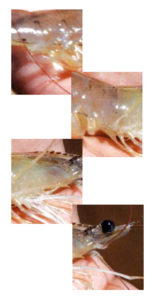
The shrimp-farming industry developed strongly in Indonesia in the late 1980s, initially in East Java. Specific pathogen-free (SPF) Pacific white shrimp (Litopenaeus vannamei) were introduced in Indonesia in 2002. Now shrimp farming has spread throughout the country, from Sumbawa to the east and South Sumatra to the west to Kalimantan, Sulawesi, and Maluku to the north.
Indonesian shrimp-farming practices vary from region to region depending on the environmental conditions and financial pressures. As in other major shrimp-farming countries, the Indonesian industry has evolved due to environmental and human health issues (mangroves, effluents, antibiotics, chemicals), as well as such social, political, legal and economic elements as antidumping and bioterrorism. The production technology has also evolved due to the effects of bacterial and viral diseases, new technologies, and changing market demands.
Water systems
About five variations of recirculation and flow-though water systems are used by the shrimp farms in Indonesia. Most were developed during the late 1980s and early 1990s before the emergence of various viral diseases in the mid-1990s. Since then, many farms have been modified with reservoirs and incoming/outgoing water treatment systems.
Recirculation
Outside Indonesia, farms like the Red Sea Shrimp Farm in Saudi Arabia and Belize Aquaculture in Belize practice very efficient water utilization with a balance of reservoirs, production ponds, and settling basins. In Indonesia, the farm design that most closely resembles the above examples is operated by the Charoen Pokphand group at P.T. Central Pertiwi Bahari (CPB) in Lampung, South Sumatra.
The farm operates on a modular basis, where each module consists of 40 to 60 square, 0.5-ha ponds with its own reservoirs and effluent treatment ponds, including a recirculating canal from the production ponds that flows to the sedimentation ponds. The water surface area of the reservoirs/sedimentation ponds is 20 to 25 percent that of the production ponds.
This arrangement was a possible factor during disease outbreaks after facility start-up. Since mid-2001, the farm systems have been redesigned with minimum or zero water exchange at certain periods of the culture cycle.
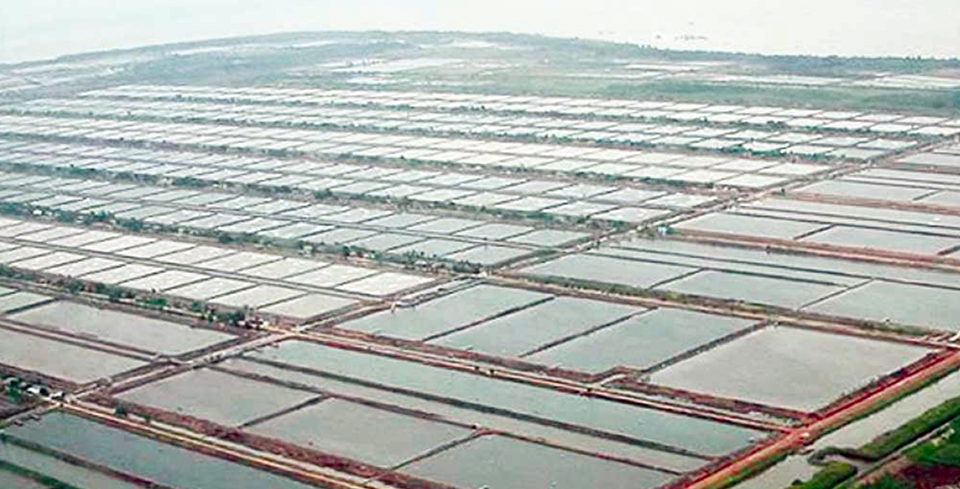
Flow-through systems
Flow-through systems pump in sea water for use in production ponds, treat it, and finally discharge it back into the sea. Flow-through culture systems are widely implemented in Indonesia at various levels of application. In Lampung, the CPB farm is one of few farms that have a complete flow-through system.
Most shrimp farms in Java have modified the original flow-through design to include reservoirs, but generally still do not have effluent treatment facilities. The accumulated effluent sediments in production ponds are normally dried, collected, and discarded away from the farm area. Effluent water from production ponds is discharged away from the main farm inlets into river estuaries or back to the ocean.
In Bali and elsewhere, newly established shrimp farms use sea water directly and discharge effluents back into the ocean. Similar practices exist in the southern part of West Java. However, the SEKAR shrimp farm at West Sumbawa uses sea water directly for production ponds, but has efficient effluent treatment with settling, where effluents are treated before discharge back to the ocean.
Pond construction
There are six types of ponds in Indonesia (Table 1). The most common type uses concrete dikes and exposed bottom soils. At large integrated shrimp farms in Lampung, most production ponds are lined with high-density polyethylene plastic (HDPE).
Taw, Types of production pond construction, Table 1
| Construction Type | Specifications |
|---|---|
| Earthen | Earthen dikes and bottom |
| Fully HDPE-lined | HDPE dikes and bottom |
| Partially HDPE-lined | Dikes and 75% of bottom lined with 25% of bottom center soil exposed |
| Concrete-lined | Concrete dikes and bottom |
| Concrete-/HDPE-lined dikes | Concrete dikes lined with HDPE, bottom soil exposed |
| Biocrete-lined | Concrete dikes, bottom lined with plastic covered with sand |
At a shrimp farm recently built in Bali, ponds especially built for L. vannamei culture are fully lined with concrete and even have ramps to allow access by small trucks during pond preparation and maintenance activities. These deep ponds have operational water levels over 2 meters.
Another type is the biocrete-lined pond, which was started a few years ago in Indonesia. The dikes are built with concrete, and the pond bottoms are lined with locally available polyethylene plastic tugged onto the dikes. Layers of sand are spread on the plastic to keep it in place.
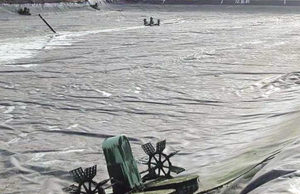
With the recent introduction of L. vannamei, shrimp productivity in HDPE- or concrete-lined ponds with sufficient supplemental aeration can nearly double that of typical earthen ponds. The carrying capacity of lined ponds has also increased at least 25 percent.
The typical carrying capacity of earthen ponds with both normal- and high-density culture is about 430 kg shrimp per horsepower of energy input, but carrying capacity of over 560 kg per horsepower has been achieved in semi-lined ponds without floc. During recent trials in fully lined ponds at high stocking density, a maximum carrying capacity of 631 kilograms per horsepower – almost that of a bacterial floc system – was achieved.
Production performance in earthen ponds is based largely on soil condition and pond preparation. If pond soil is of good quality and can be cleaned, oxidized, and compacted after each operation, pond carrying capacity in earthen ponds can be as high as that of fully lined ponds.
Regular pond bottom maintenance is possible for small farms, but not feasible for large farms, especially during the wet season, when compacting pond bottoms and dikes with rollers becomes impossible. With the growing importance of biosecurity and introduction of SPF L. vannamei, new facilities are investing in ponds lined with HDPE or concrete.
Culture technology
With the arrival of SPF L. vannamei in Indonesia, a number of technologies have emerged to take advantage of their wide range of tolerance and adaptability. Various technologies and production strategies have been tried (Table 2), including monoculture with normal and high density, partial harvesting, polyculture of L. vannamei and P. monodon, two-step culture with minimum water exchange, and zero-water-exchange bacterial floc systems for L. vannamei.
Taw, Characteristics of various shrimp culture technologies, Table 2
| System | Objective | Achievements (Source) |
|---|---|---|
| L. vannamei | ||
| Monoculture Normal stocking density 60-80/m2/16-20 hp energy High stocking density 100-150/m2/24-34 hp energy | Sustainable production Increase pond productivity with increased energy input (aeratorsor air diffusers) | 8.0-10.0 mt/ha, 16-20 g sizes 14.0-30.0 mt/ha, 14-18 g sizes (Java, Bali, Lombok, CPB) |
| Monoculture partial harvest Stocking density 200-260/m 2/28-30 hp energy | Increase pond productivity | 25.0-35.0 mt/ha. 12-20 g sizes (Lampung, CPB trials) |
| Bacterial floc (zero water exchange) Stocking density 130-150/m2/30-32 hp energy | Increase biosecurity, productivity, and efficiency | 20-24 mt/ha, 16-20 g sizes Record: 49.7 mt/ha after stocking at 280/m2 (CPB) |
| L. vannamei and P. monodon Two-step culture | High survival through nursery phase | Higher survival (CPB) |
| Minimum water exchange | Increase biosecurity | Higher biosecurity (CPB) |
| Polyculture (L. vannamei and P. monodon) Stocking density 70/m 2 (40-50 vannamei, 20-30 monodon | Utilize 100% of pond water column and bottom area to increase pond productivity | 7.5 vannamei, 3.5 monodon mt/ha (Lampung, CPB trials) |
L. vannamei can withstand very high stocking density as long as production ponds are deep and of high quality. Monoculture systems with paddlewheel aerators and compressed air diffusers can produce up to 30 metric tons (MT) per hectare. In bacterial floc systems, production as high as 49.7 MT per hectare has been recorded.
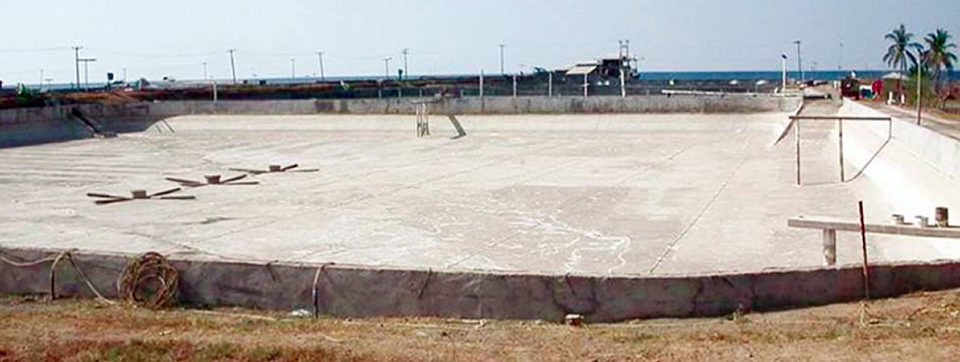
Partial harvesting is a method that can greatly increase pond production and quality of shrimp when culturing L. vannamei. Polyculture of L. vannamei and P. monodon has also been studied at P.T. Central Pertiwi Bahari – amid criticism because one species is SPF and the other is not. However, a number of tests successfully implemented the polyculture with consistent results. The approach capitalizes on the different habitat use and behavior of L. vannamei and P. monodon, thus utilizing the whole pond water environment to increase overall pond productivity.
(Editor’s Note: This article was originally published in the August 2005 print edition of the Global Aquaculture Advocate.)
Now that you've reached the end of the article ...
… please consider supporting GSA’s mission to advance responsible seafood practices through education, advocacy and third-party assurances. The Advocate aims to document the evolution of responsible seafood practices and share the expansive knowledge of our vast network of contributors.
By becoming a Global Seafood Alliance member, you’re ensuring that all of the pre-competitive work we do through member benefits, resources and events can continue. Individual membership costs just $50 a year.
Not a GSA member? Join us.
Author
-
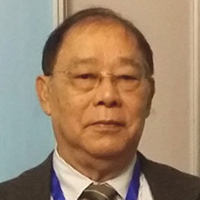
Nyan Taw, Ph.D.
Senior Technical Advisor/Vice President
P.T. Central Pertiwi Bahari
SHS Building, Second Floor
Jl Ancol Barat Block A5E No.10
Jakarta, Indonesia
nyan.taw@cpbahari.com
[109,111,99,46,111,111,104,97,121,64,119,97,116,110,97,121,110]
Tagged With
Related Posts

Responsibility
A look at integrated multi-trophic aquaculture
In integrated multi-trophic aquaculture, farmers combine the cultivation of fed species such as finfish or shrimp with extractive seaweeds, aquatic plants and shellfish and other invertebrates that recapture organic and inorganic particulate nutrients for their growth.

Responsibility
A look at various intensive shrimp farming systems in Asia
The impact of diseases led some Asian shrimp farming countries to develop biofloc and recirculation aquaculture system (RAS) production technologies. Treating incoming water for culture operations and wastewater treatment are biosecurity measures for disease prevention and control.
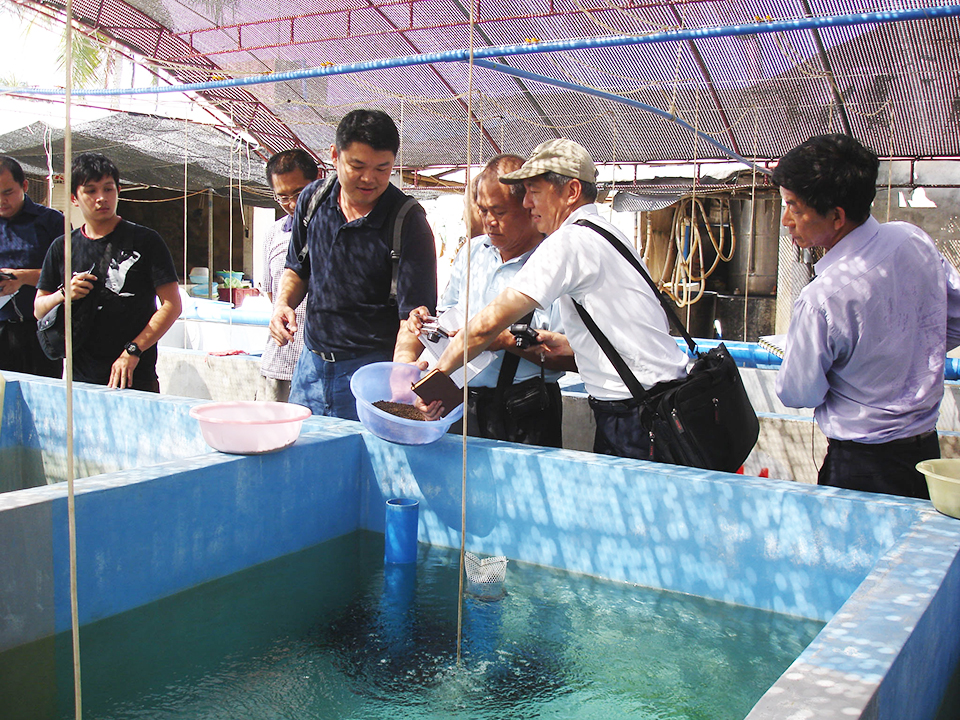
Aquafeeds
ASAIM addresses challenges to growth of marine fish farming in Southeast Asia
In its efforts to advance sustainable aquaculture practices and the use of soy-based feeds in Southeast Asia, the American Soybean Association International Marketing Program (USAIM) has identified several challenges.
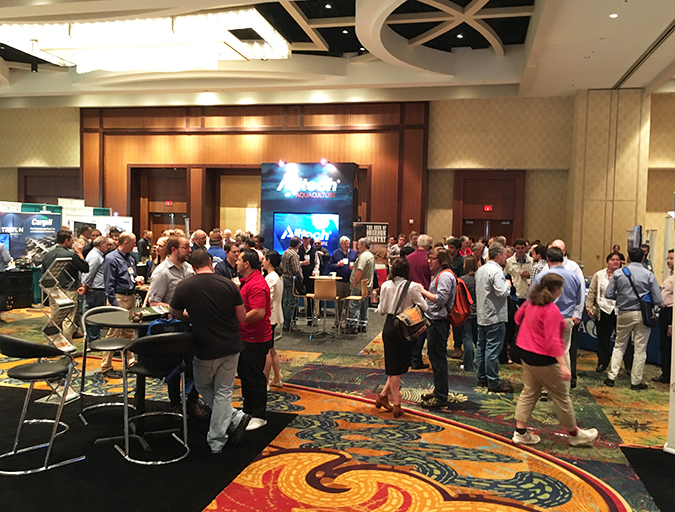
Innovation & Investment
Aquaculture America 2017: Communication key to the future
This year’s Aquaculture America in San Antonio, Texas, provided significant learning and networking opportunities. It successfully brought together 14 U.S. aquaculture organizations and more than 1,600 participants from Europe, Asia, Africa and Australia.

